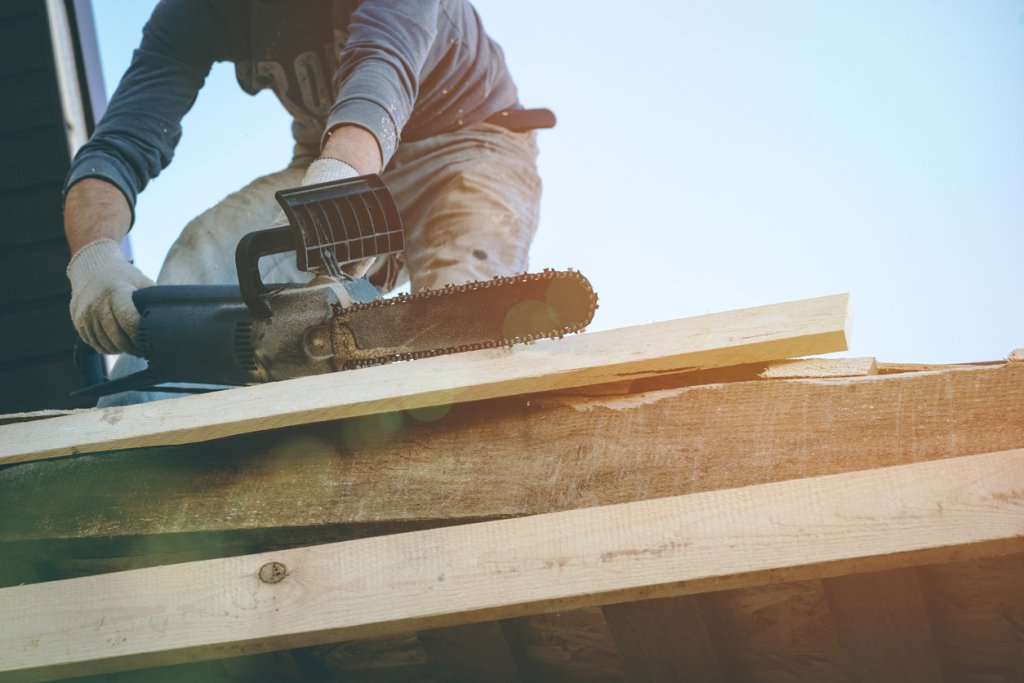Chainsaw Safety Talk
Workers should practice extreme caution whenever using a chainsaw. While the majority of chainsaw accidents in the U.S. occur when untrained individuals use this potentially dangerous equipment at home, professionals can also be seriously injured. Due to the possible severity of chainsaw injuries, it's important to observe proper safety protocols.
If you work a job that requires you to regularly operate a chainsaw, you should be fully educated in chainsaw safety, with all the necessary qualifications. You should understand what personal protective equipment (PPE) needs to be worn, what best practices need to be followed, and what chainsaw safety features must be used to prevent accidents and injuries.
In this chainsaw safety talk, we'll cover all those points in detail.
Chainsaw injury and fatality statistics
Anytime you are using a power tool like a chainsaw, there is a risk of harm. In reviewing chainsaw injury and fatality statistics over the past few years from OSHA and other sources, some commonalities can be found when it comes to what causes chainsaw accidents:
The most common area of the body to be injured in a chainsaw accident is the legs or the knees. In fact, studies show 40% of chainsaw injuries happen to these two areas of the body.
The second most common area of the body to incur a chainsaw injury is the hands or wrists. 35% of chainsaw injuries involve the hands or wrist.
Most injuries that are caused by a chainsaw happen when the blade gets hung up, called a kickback. The blade will “kickback” in the direction of the operator.
Chainsaw safety best practices
When operating a chainsaw on the construction site, keep these best practices in mind:
1. Be properly trained
It is important to make sure that you are knowledgeable and informed about the proper use of chainsaws before operating one. The jobsite is not the place to "figure it out as you go". That just leaves room for error.
The proper training and knowledge are needed to ensure you and your coworkers are as safe as possible. Make sure you are familiar with both general chainsaw safety as well as the operation of the particular make and model you will be using.
2. Read the manual
Always read the instructions and manuals that are provided with the chainsaw you will be using. This will teach you exactly what all the features are on your make and model, and it will give you specific instructions on how to use the chainsaw.
This way you will know how to safely use the tool based on the manufacturer's reccomendations.
3. Never use a chainsaw on a ladder or unstable surface
When you are on a ladder, suspended above, or on unstable surfaces, you should never operate a chainsaw for any reason. Any instability is too risky for yourself and for the other people who are around below you. You'll have a much higher risk of losing your balance and falling or accidentally cutting yourself.
Likewise, it is also recommended that you never reach above you with a chainsaw. Always try and keep the chainsaw at a level below shoulder height.
4. Make full contact
When you are operating a chainsaw, you should always make full contact with the blade against the area that you are cutting. Starting a cut with the tip of the chainsaw or just a small part of it is more likely to lead to blade kickbacks.
5. Stay alert
When you are using a chainsaw, you should always stay alert and try to be as cautious as possible. Always be ready for anything that could happen, including a kickback.
Not paying attention to your work or your surroundings can result in serious injuries that could have been avoided.

PPE to wear when operating a chainsaw
Wearing PPE while operating a chainsaw can help prevent unnecessary injuries.
PPE items that should be worn while chainsawing include:
Hard hat
Gloves
Earplugs
Protective chaps
Face shield
Protective toe boots
Remember that PPE is a last line of defense, not your only safety measure, so safety training and best practices should still be followed even when wearing proper chainsaw PPE.
What not to wear when operating a chainsaw
Just as there are specific PPE items that you should wear when operating a chainsaw, there are also certain items that you should not wear for your safety.
This includes loose clothing, jewelry, or loose hair. These are all hazards because they can get caught in the teeth of the chainsaw.
Chainsaw safety features
One of the key reasons that reading the manual that comes along with your chainsaw is so important is so you understand all the safety features of your specific model.
Chainsaw safety features vary from brand to brand and model to model. It's important you know what each of your safety features do and why they're included.
NEVER override or turn off a safety feature. They exist for your benefit.
Chainsaw safety features may include:
Felling sight
Anti-vibration mounts
Chain brakes
Safety trigger locks
Low kickback chains
Spark arrestor
Sprocket-nose bar
Chain catch pin
Hand guards
Chainsaw safety is number one
Whenever you are operating any type of power tool or mechanical device, you should take the utmost precaution that you can. A chainsaw is no exception.
These types of tools always need to be treated respectfully and responsibly. Safety regulations and protocols are put into place to try and keep everyone at the workplace as safe as possible. Injuries can happen even when the right precautions are being followed, so that's why it is so important to make chainsaw safety a priority, to minimize risk.
Find and schedule topics faster
Raken's toolbox talk app makes it easy to choose from a pre-loaded library (or upload your own), then schedule and assign topics for any project. We'd love to show you how in a demo and get you started on a free trial.